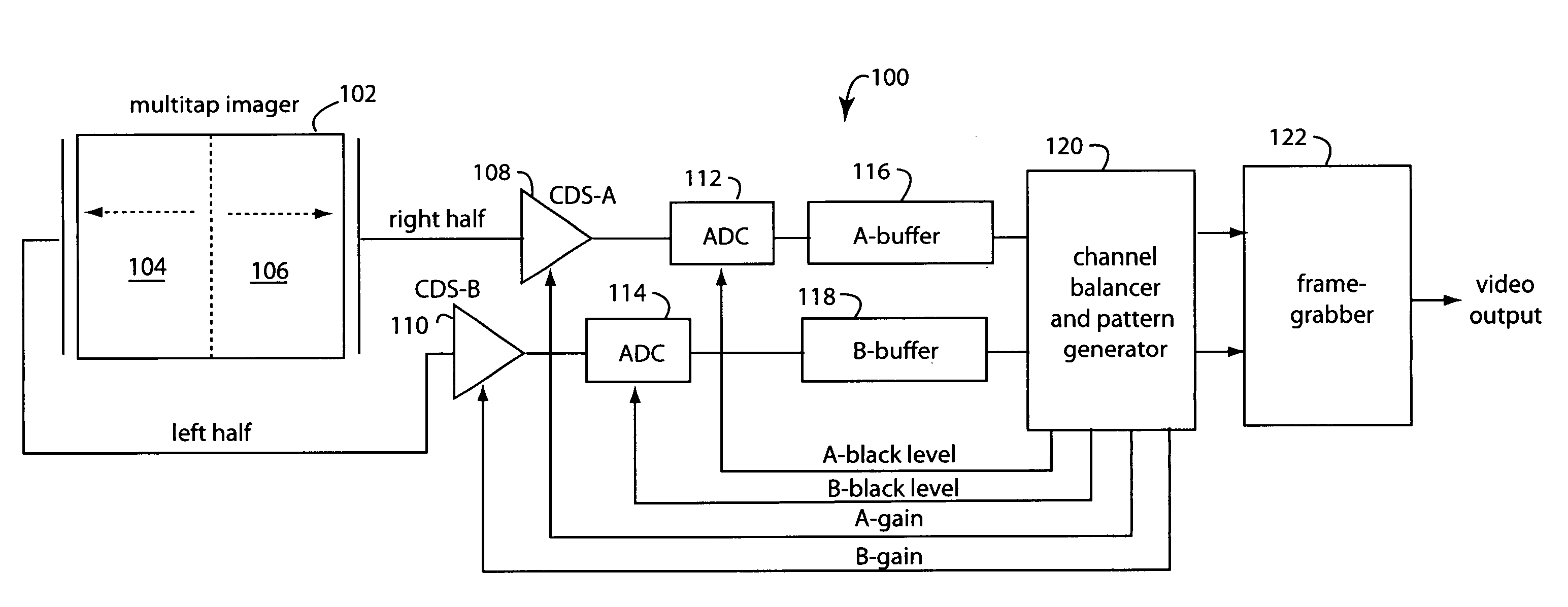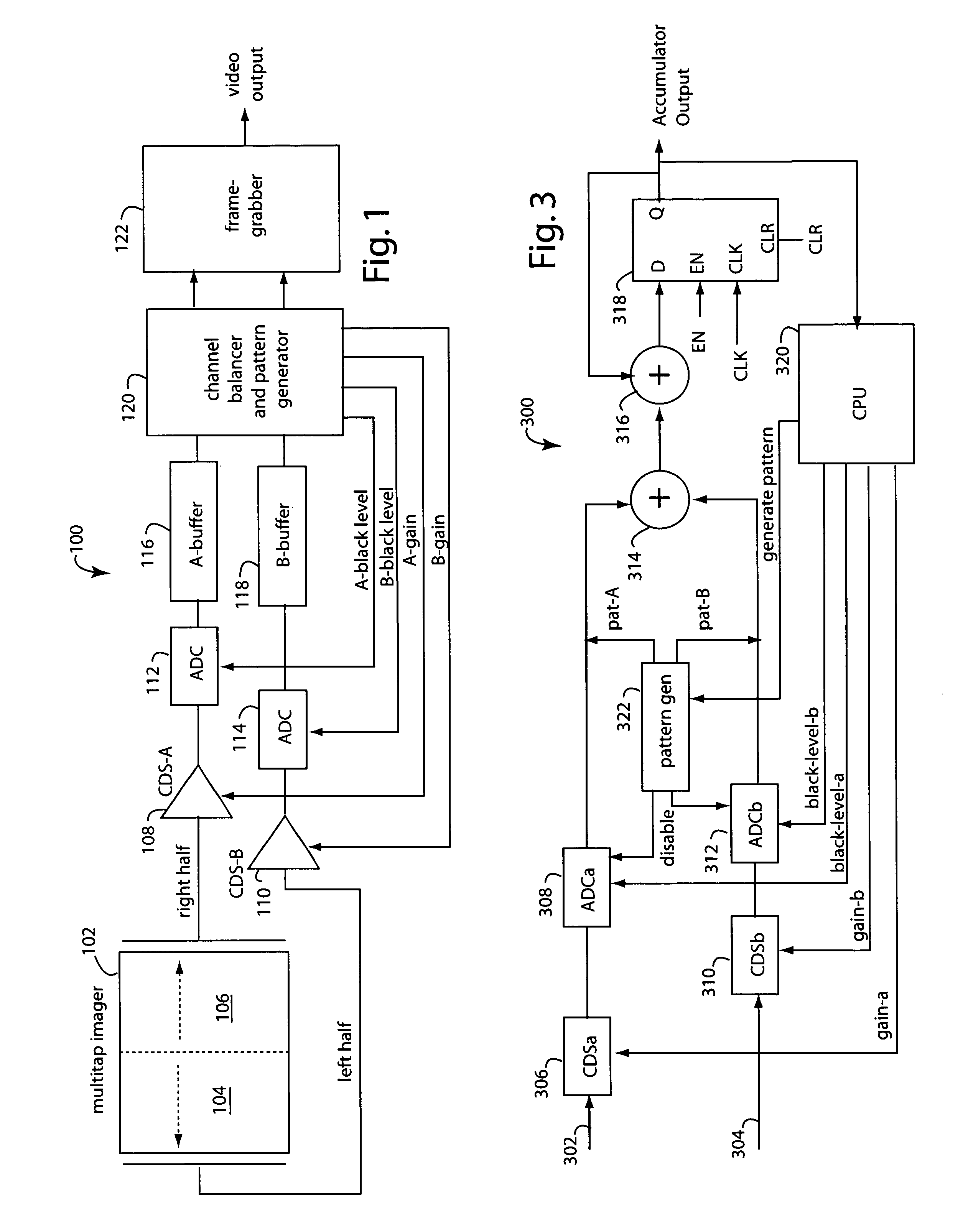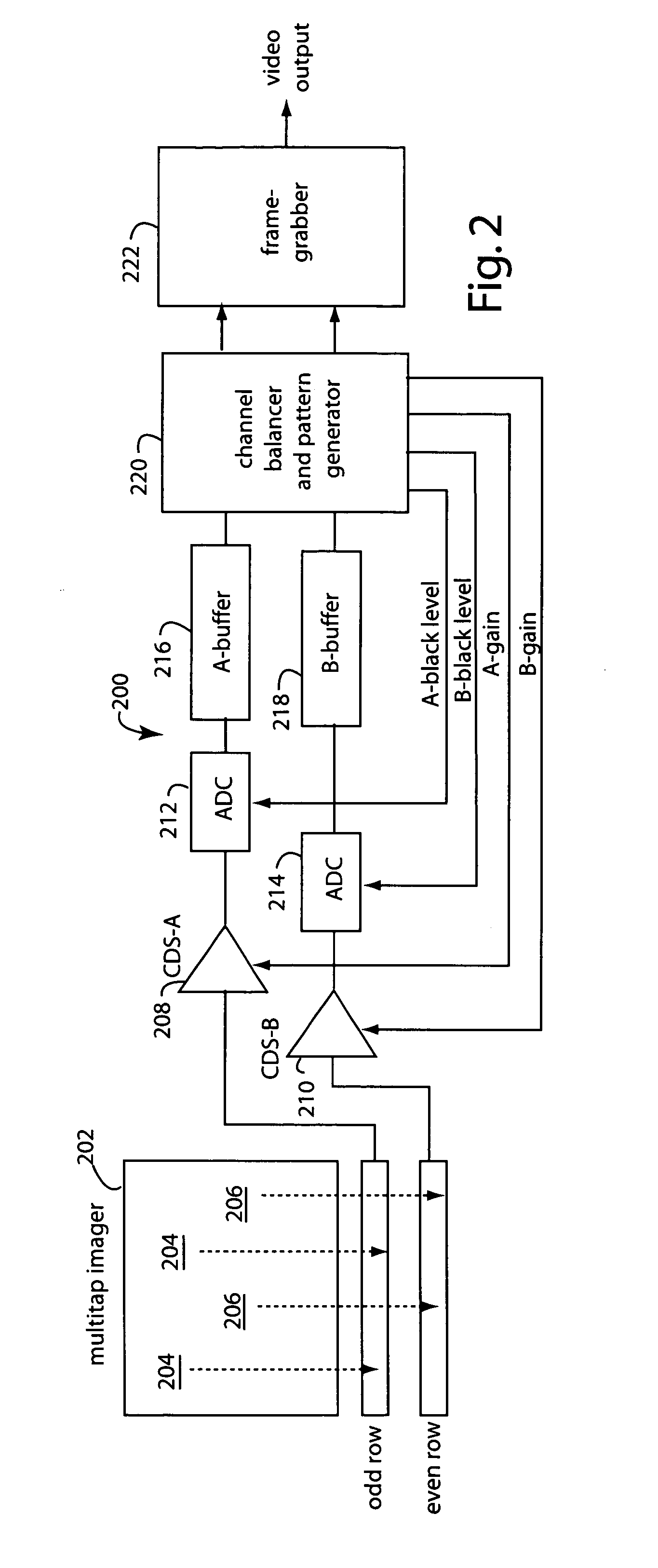Multi-tap camera
a multi-tap camera and camera body technology, applied in the field of digital cameras, can solve the problems of affecting the accuracy of the restitching of the problem of usually being unable to accurately restitch the image frame sections, and the row or column of pixels taking longer to serially clock out, etc., to achieve automatic balanced digitizing channels
- Summary
- Abstract
- Description
- Claims
- Application Information
AI Technical Summary
Benefits of technology
Problems solved by technology
Method used
Image
Examples
Embodiment Construction
[0013]FIG. 1 represents a multitap-sensor camera embodiment of the present invention, and is referred to herein by the general reference numeral 100. A multitap imager 102 has two zones of pixels, a left zone 104 and a right zone 106. If the imager were array of 2048×2048 pixels, for example, then pixels 1-1023 would clock out serially on the left side in parallel to pixels 2048-1024 which clock out from the right side. At the vertical zone-division in the middle, for every row, pixel-1023 on the left and pixel-1024 on the right are the last on each side respectively to serially clock out. However, when zones 104 and 106 are restitched back together, e.g., in a framegrabber, these pixels are supposed to be adjacent to each other. The pixels next to each other in pixel column-1023 and column-1024 are assumed herein to provide the best clues as to the correct gain and black level balance between the left and right zones.
[0014]The multitap-sensor camera 100 further comprises pair corre...
PUM
 Login to View More
Login to View More Abstract
Description
Claims
Application Information
 Login to View More
Login to View More - R&D
- Intellectual Property
- Life Sciences
- Materials
- Tech Scout
- Unparalleled Data Quality
- Higher Quality Content
- 60% Fewer Hallucinations
Browse by: Latest US Patents, China's latest patents, Technical Efficacy Thesaurus, Application Domain, Technology Topic, Popular Technical Reports.
© 2025 PatSnap. All rights reserved.Legal|Privacy policy|Modern Slavery Act Transparency Statement|Sitemap|About US| Contact US: help@patsnap.com



